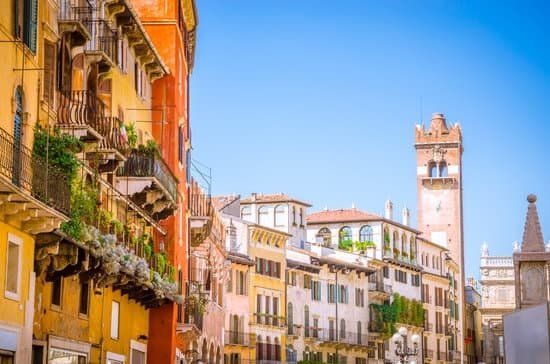Italy, known for its rich history, breathtaking landscapes, and mouthwatering cuisine, is a must-visit destination for travelers. Whether you’re exploring ancient ruins in Rome, marveling at the art in Florence, or floating along the canals of Venice, Italy offers an unforgettable experience for every type of traveler. In this article, we will provide you with the best travel tips to ensure a seamless and memorable trip to Italy.
Before embarking on your Italian adventure, it’s important to be prepared. We will guide you through essential pre-travel tips such as obtaining necessary travel documents and visas. Additionally, understanding the local customs and culture will help you navigate Italian society with ease. We’ll also provide insights on packing essentials for different regions and weather conditions in Italy so that you can dress appropriately and comfortably during your trip.
Choosing the right time to visit Italy can greatly enhance your experience. In this article, we will break down the four seasons in Italy and discuss their pros and cons. By avoiding peak tourist seasons, you can enjoy better deals and a more relaxed atmosphere. Furthermore, we’ll share insider tips on when to visit specific destinations based on weather considerations.
With a country as diverse as Italy, knowing how to navigate transportation is crucial. We’ll give you an overview of different transportation options such as trains, buses, and rental cars. Our tips for using public transportation efficiently and cost-effectively will help you save time and money during your travels. Finally, we’ll explain the importance of validating train tickets and understanding regional differences in transportation systems.
From iconic cities like Rome and Florence to hidden gems off the beaten path, Italy has something for every traveler’s taste. We’ll take you through must-see destinations including famous landmarks as well as lesser-known towns that offer authentic experiences. Moreover, our insider recommendations for local food and wine tours will allow you to indulge in authentic Italian cuisine.
Essential Pre-Travel Tips for a Seamless Experience in Italy
When planning a trip to Italy, there are several essential pre-travel tips that can help ensure a seamless experience in the country. First and foremost, it is important to obtain all necessary travel documents and visas before departing for Italy.
Depending on your country of origin, you may require a visa or other entry requirements to enter Italy. It is advisable to check with the Italian embassy or consulate in your home country for the most up-to-date information.
In addition to travel documents, it is crucial to understand the local customs and culture when visiting Italy. Italians are known for their warm hospitality and strong sense of tradition, so familiarizing yourself with some basic cultural norms can go a long way in ensuring a positive experience. It is customary to greet others with a friendly “buongiorno” (good morning) or “buonasera” (good evening) and show respect when entering churches or religious sites by covering shoulders and knees.
Another important aspect of pre-travel preparation is packing essentials for different regions and weather conditions in Italy. The climate in Italy varies greatly from north to south, with cooler temperatures in the alpine regions and hotter temperatures along the southern coast. It is advisable to pack layers that can be easily added or removed depending on the weather. Additionally, comfortable walking shoes are a must as many cities in Italy are best explored on foot.
By taking care of these essential pre-travel tips, travelers can set themselves up for a seamless experience in Italy. Obtaining the necessary travel documents and visas will prevent any last-minute complications at immigration, while understanding local customs and culture will help create positive interactions with residents. Packing appropriately for different regions and weather conditions will ensure comfort throughout the trip. With these preparations complete, travelers can focus on fully immersing themselves in all that Italy has to offer.
Best Time to Visit Italy
Italy is a year-round destination, but understanding the different seasons can help you plan your trip to make the most of your time and budget. Here is a breakdown of the four seasons in Italy and their pros and cons:
- Spring (March to May): Spring is a beautiful time to visit Italy as the weather starts warming up, flowers bloom, and crowds are relatively smaller compared to summer. The countryside comes alive with vibrant colors, making it perfect for picturesque road trips and exploring outdoor attractions. However, popular cities like Rome and Florence can still be crowded during Easter holidays.
- Summer (June to August): Summer in Italy means long days full of sunshine and warm weather. It’s peak tourist season with crowded attractions, especially in popular destinations like Venice and the Amalfi Coast. However, if you’re looking for beach vacations or want to explore coastal regions, this is the perfect time. Just be prepared for higher prices and book accommodations well in advance.
- Fall (September to November): Autumn brings mild temperatures, fewer tourists, and lower prices compared to summer. The landscape transforms into stunning autumnal hues, creating a romantic atmosphere in cities like Florence and Tuscany. It’s also harvest season, so you can savor local wines during oenological tours or attend food festivals celebrating seasonal produce.
- Winter (December to February): Winter in Italy offers a completely different experience with fewer tourists and lower prices on flights and accommodations (excluding Christmas and New Year). While southern regions like Sicily enjoy milder temperatures, northern parts have snowy landscapes that are perfect for winter sports enthusiasts.
To avoid peak tourist seasons and enjoy better deals on travel expenses such as accommodations and airfare, consider visiting Italy during shoulder season (spring or fall) when the weather is still pleasant but crowds are thinner.
Navigating Transportation in Italy
Italy is a country known for its rich history, stunning landscapes, and vibrant culture. With so much to explore, it’s important to know how to navigate the transportation system in Italy to make the most of your trip. Whether you prefer trains, buses, or rental cars, understanding your options and using them efficiently can help you get around like a local.
Overview of Different Transportation Options
Italy offers various modes of transportation that cater to different preferences and budgets. Trains are a popular choice for traveling between cities and regions. The national train network in Italy is extensive and well-connected, making it convenient for exploring different parts of the country. Buses are another reliable option for getting around, especially if you’re visiting smaller towns or rural areas where train connections may be limited.
If you prefer more flexibility and independence, renting a car can give you the freedom to explore at your own pace. However, keep in mind that driving in certain cities like Rome or Florence can be challenging due to traffic congestion and limited parking options. It’s also worth noting that many historic city centers have restricted access zones where only authorized vehicles are allowed.
Tips for Using Public Transportation Efficiently
To make the most of your time in Italy, it’s essential to use public transportation efficiently. When traveling by train, it’s important to validate your ticket before boarding to avoid fines. Validation machines can usually be found on the platforms or inside the trains.
For buses, it’s recommended to purchase tickets in advance as they are not always available onboard. Additionally, consider using an app or consulting local schedules for accurate arrival times as they can vary depending on the day of the week and time of year.
Understanding regional differences is also crucial when using public transportation in Italy. Some regions may have their own local bus systems or rely more heavily on ferry services for island destinations like Capri or Sicily. Researching the specific transportation options available in each destination will help you plan your journey more effectively.
By familiarizing yourself with these transportation tips, you can navigate Italy like a local and make the most of your travel experience. Whether you choose to explore the iconic cities or venture off the beaten path, getting around efficiently will allow you to fully immerse yourself in all that Italy has to offer.
Top Must-See Destinations and Hidden Gems in Italy
Italy is home to countless must-see destinations and hidden gems that captivate travelers from around the world. From iconic cities and landmarks to lesser-known towns and regions off the beaten path, Italy offers a diverse range of experiences for every type of traveler. Whether you’re interested in exploring historical sites, soaking up sun on picturesque beaches, or immersing yourself in the local culture, there’s something for everyone in Italy.
Iconic Cities and Landmarks
No visit to Italy would be complete without experiencing its iconic cities and landmarks. Rome, known as “The Eternal City,” offers a treasure trove of historical sites such as the Colosseum, Roman Forum, and Vatican City with its stunning St. Peter’s Basilica and Michelangelo’s masterpiece, the Sistine Chapel. In Florence, visitors can admire Renaissance art at the Uffizi Gallery or marvel at Brunelleschi’s dome atop the iconic Florence Cathedral (Duomo).
Venice enchants with its winding canals, romantic gondola rides, and famous Piazza San Marco. And let’s not forget about the breathtaking Amalfi Coast with its cliffside villages like Positano and picturesque views of the Mediterranean Sea.
Lesser-Known Towns and Regions
Beyond the well-known cities, Italy is also home to lesser-known towns and regions that offer a more authentic glimpse into Italian life. Tuscany’s charming hilltop towns like San Gimignano or Cortona are perfect for those seeking a slower pace amidst idyllic landscapes dotted with vineyards and cypress trees.
The region of Umbria boasts medieval villages like Perugia or Assisi, where visitors can immerse themselves in history while indulging in delicious local cuisine. For nature lovers, the Dolomites in Northern Italy offer stunning mountain scenery, opportunities for hiking or skiing, and a chance to visit charming alpine villages like Ortisei or Cortina d’Ampezzo.
Insider Recommendations for Local Experiences
To truly embrace the Italian way of life, it’s essential to go beyond the usual tourist attractions and seek out local experiences. Food and wine tours are a fantastic way to discover the diverse culinary traditions of Italy’s different regions.
In Bologna, known as the food capital of Italy, visitors can join a cooking class and learn how to make fresh pasta or traditional ragù sauce. For wine enthusiasts, a visit to Tuscany’s famous Chianti region offers opportunities to explore vineyards and wineries, taste world-class wines, and indulge in farm-to-table meals showcasing local ingredients.
Authentic Italian Cuisine
When visiting Italy, one of the highlights for travelers is undoubtedly experiencing the country’s authentic cuisine. Italian food is known worldwide for its simplicity, quality ingredients, and rich flavors. However, there are certain dining tips and etiquette that visitors should be aware of to fully immerse themselves in the Italian dining experience.
Firstly, it’s important to explore the Italian culinary scene beyond just pizza and pasta. Italy has a diverse range of regional cuisines, each offering its own specialties and traditional dishes.
Whether you’re in Naples enjoying a classic Margherita pizza or in Bologna indulging in handmade tortellini, make it a priority to try local dishes that are unique to each region. Embark on food tours or seek recommendations from locals to discover hidden gems that may not be as well-known to tourists.
Understanding dining etiquette and traditions is also crucial when dining out in Italy. One custom is to always greet restaurant staff with a polite “buongiorno” (good day) or “buonasera” (good evening) upon entering an establishment.
Another key aspect of Italian dining culture is taking your time and savoring each course. Italians typically have multiple courses during a meal, starting with antipasti (appetizers), followed by primo piatto (first course) such as pasta or risotto, secondo piatto (second course) which consists of meat or fish, contorno (side dish), and finally dolce (dessert).
Additionally, it’s important to be aware of different dining norms depending on the time of day. For example, ordering cappuccino after breakfast is generally frowned upon as it’s seen as a breakfast-only drink in Italy. Also, unlike in some other countries where splitting the bill evenly among a group is common practice, it is customary for each person to pay for what they ordered when dining out in Italy.
To fully appreciate authentic Italian cuisine, don’t forget to explore the local gastronomic specialties in different regions. While pizza and pasta are staples, each region has its own unique dishes that are worth trying. For example, in Tuscany, indulge in the famous Florentine steak or enjoy a bowl of hearty ribollita soup.
In Sicily, sample arancini (deep-fried rice balls) or cannoli for dessert. By embracing regional specialties, you’ll gain a deeper understanding and appreciation for the diversity of Italian cuisine.
Staying Connected
When traveling to Italy, staying connected and having access to the internet can greatly enhance your travel experience. Whether it’s for navigation, communication, or simply sharing your adventures with loved ones back home, having a reliable internet connection is essential. Here are some tips to help you stay connected while in Italy.
One option is to obtain a local SIM card for your smartphone. This allows you to have a local phone number and access to mobile data at affordable rates. You can easily purchase SIM cards at airports, convenience stores, or mobile carrier shops. It’s important to check if your device is unlocked and compatible with the Italian network frequencies before purchasing a SIM card.
If you prefer not to use a local SIM card or have multiple devices that need internet access, consider renting a portable Wi-Fi device. These devices provide you with unlimited data usage and can connect multiple devices simultaneously. They are often available for pick-up at airports or can be delivered directly to your accommodation.
While exploring Italy, you’ll find that Wi-Fi is widely available in many hotels, restaurants, cafes, and public spaces. However, the quality and reliability of the connection may vary. It’s always a good idea to verify with the establishment if they offer free Wi-Fi before ordering or making reservations.
To overcome potential language barriers when communicating or navigating in Italy, there are useful phrases and apps that can help. Basic Italian phrases such as “hello” (ciao), “thank you” (grazie), and “where is ” (dov’è) can go a long way in getting assistance or directions from locals. Additionally, using translation apps like Google Translate or offline maps like MAPS.ME can be incredibly helpful.
Staying connected while traveling in Italy has never been easier with various options for internet access and communication available. From using local SIM cards or portable Wi-Fi devices to taking advantage of free Wi-Fi hotspots and language assistance tools, you can navigate the country with ease and stay connected with your loved ones throughout your journey.
| Tips for Staying Connected |
|---|
| Obtain a local SIM card for affordable mobile data and local phone number. |
| Rent a portable Wi-Fi device for unlimited data usage. |
| Check availability of free Wi-Fi in hotels, restaurants, cafes, and public spaces. |
| Learn basic Italian phrases for communication or use translation apps. |
Safety and Security
Italy is a beautiful and popular tourist destination, but like any other country, it’s important to be aware of potential tourist traps and scams. In this section, we will provide you with tips on how to stay safe and avoid common pitfalls during your trip to Italy.
One of the most common scams in Italy is the “friendly stranger” scam. This usually involves someone approaching you on the street claiming to be a friendly local who wants to offer help or show you around. They may even offer to take your picture or tie a bracelet on your wrist.
However, once they have gained your trust, they may demand money or try to sell you overpriced goods. It’s best to politely decline any offers from strangers and be cautious about accepting help from individuals you don’t know.
Another common scam in Italy is the “fake police” scam. Scammers may approach tourists pretending to be police officers and ask for identification or search their bags. The scammers will often wear fake uniforms and badges that look genuine. If someone claiming to be a police officer approaches you, politely ask for their identification and do not hand over your belongings unless you are certain they are legitimate law enforcement officers. It’s always better to be safe than sorry.
To protect your personal belongings while traveling in Italy, it’s important to use caution when in crowded tourist areas. Pickpocketing can occur in busy places such as train stations, markets, and public transportation. Keep an eye on your belongings at all times and consider using anti-theft products such as money belts or slash-proof bags. Additionally, avoid carrying large amounts of cash with you and keep important documents secure in a hotel safe.
| Scam | Tips for Avoidance |
|---|---|
| Friendly Stranger Scam | – Politely decline offers from strangers\n – Be cautious about accepting help from unknown individuals |
| Fake Police Scam | – Ask for identification\n – Do not hand over belongings unless certain they are legitimate law enforcement officers |
| Pickpocketing | – Keep an eye on belongings in crowded areas\n – Consider using anti-theft products such as money belts or slash-proof bags |
Conclusion
In conclusion, visiting Italy is a must for any traveler seeking to experience the rich history, vibrant culture, and exquisite cuisine that this beautiful country has to offer. By following the essential pre-travel tips outlined in this article, such as obtaining necessary travel documents and understanding local customs, visitors can ensure a seamless experience in Italy.
Furthermore, considering the best time to visit Italy can greatly enhance one’s trip. By taking into account weather patterns, crowd levels, and budget considerations, travelers can avoid peak tourist seasons and enjoy better deals. Exploring the different transportation options available in Italy is also crucial for getting around like a local. Whether it’s using trains, buses, or rental cars, following cost-effective and efficient transportation tips will make navigating the country much easier.
While Italy is famous for its iconic cities and landmarks like Rome, Florence, Venice, and the Amalfi Coast, it is also home to many hidden gems off the beaten path. Venturing outside of popular tourist destinations will allow travelers to discover lesser-known towns and regions that are just as enchanting.
Additionally, immersing oneself in authentic Italian cuisine extends beyond pizza and pasta. Exploring local gastronomic specialties in different regions will provide a deeper appreciation for the country’s culinary scene.
Lastly, staying connected while traveling through Italy is important for convenience and safety. Understanding options for getting local SIM cards or portable Wi-Fi devices will ensure reliable internet access throughout the trip. Furthermore, being aware of Wi-Fi availability in hotels, restaurants, and public spaces can help travelers stay connected on-the-go. Equipping oneself with useful phrases and apps can also help overcome language barriers.
In embracing the Italian way of life during their visit to Italy, travelers have the opportunity to capture unforgettable moments and memories. From indulging in delectable cuisine to exploring historical landmarks to savoring breathtaking views of scenic landscapes – each experience contributes to a memorable journey through this remarkable country. By following the travel tips and recommendations provided in this article, visitors can truly make the most of their time in Italy and create cherished memories that will last a lifetime.
Frequently Asked Questions
How do I prepare for a trip to Italy?
When preparing for a trip to Italy, there are several key aspects to consider. First, make sure to have all necessary travel documents, such as a valid passport and any required visas. It is also important to research and plan the places you want to visit in Italy, taking into account the duration of your trip and your specific interests.
Familiarize yourself with some basic Italian phrases or carry a pocket-sized translation guide to facilitate communication with locals. Consider packing appropriate clothing for the season and checking the weather forecast before departure. Additionally, it can be helpful to exchange some currency before arriving in Italy or withdraw cash from ATMs once there, as not all establishments may accept credit cards.
What is the most effective way to travel in Italy?
The most effective way to travel within Italy largely depends on personal preferences and the specific itinerary. Generally speaking, the Italian train system is quite extensive and efficient, offering connections between major cities and towns throughout the country. Trains are often recommended for long-distance travel as they are convenient and offer scenic views of the Italian countryside.
For shorter distances or exploring rural areas, renting a car allows for more flexibility in terms of schedules and destinations. However, keep in mind that driving in busy urban centers like Rome or Florence can be challenging due to traffic congestion and limited parking options.
How can I enjoy Italy the most?
How you can enjoy Italy the most depends on what you personally find fulfilling about travel experiences. To fully immerse yourself in its rich culture, take time to explore local customs, traditions, and cuisine. Engage with locals by making an effort to learn a bit of Italian language or by participating in activities like cooking classes or artisan workshops that allow you to interact with Italians on a personal level.
Don’t limit yourself only to tourist hotspots; seek out off-the-beaten-path destinations where you can discover hidden gems that showcase the authentic charm of Italy. Lastly, savor every moment by indulging in Italy’s renowned gastronomy – whether it’s enjoying a classic Italian pasta dish, sampling gelato from a local shop or sipping espresso in a quaint café, experiencing the country through its culinary delights is an essential part of any trip to Italy.

I’m a passionate traveler, writer, and Italophile. My fascination with Italy’s history, art, and culture has led me on countless adventures across the Italian landscape. Through “I Live Italy,” I share my love for this extraordinary country and aims to inspire others to explore its boundless beauty.





